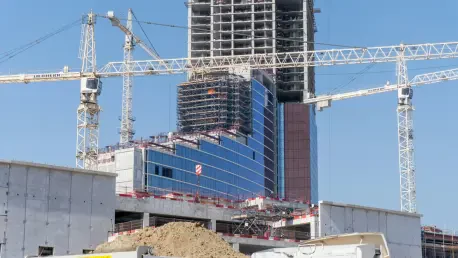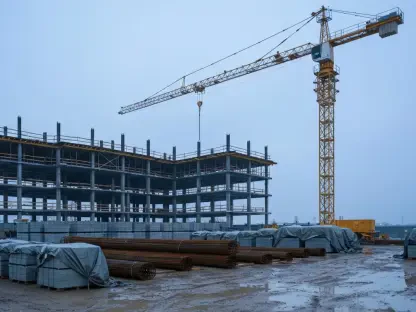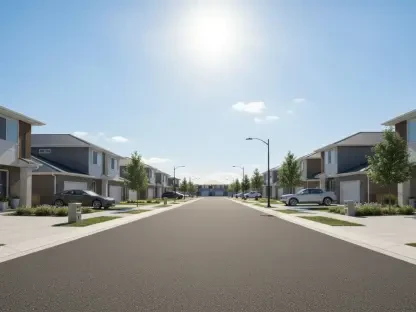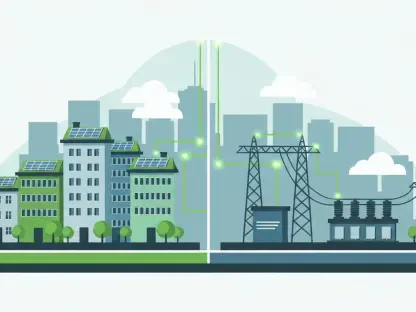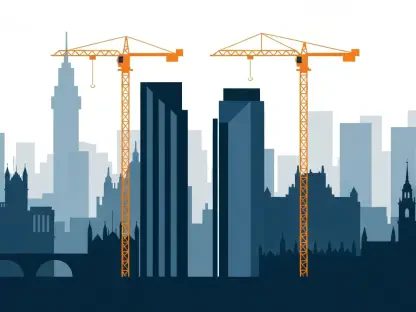Luca Calarailli, with his extensive experience in construction, design, and architecture, brings a unique perspective to the evolving landscape of hotel development. His insights into technological advancements and their role in the industry help decode the intricate trends shaping hotel construction in the APEC region, a sector experiencing significant growth and transformation.
Can you provide an overview of the current hotel construction pipeline in the APEC region as reported for Q1 2025?
The APEC hotel construction pipeline is certainly on the rise. By the end of Q1 2025, there were 2,074 projects and 408,213 rooms, showing a slight annual growth in both projects and rooms. This progression, though modest, underscores a steady commitment to expanding hospitality infrastructure in the region.
How does the construction status differ across various regions within the APEC area?
The diversity within the APEC region means construction status varies widely, but a comprehensive snapshot reveals that 872 projects comprising 198,640 rooms are already underway. In the next 12 months, we expect construction commencement for 328 projects and 66,559 rooms. Furthermore, the early planning stage has seen impressive growth, with record-high figures for both projects and rooms.
What are the key figures for projects and rooms that are currently under construction as of the end of Q1 2025?
Currently, 872 projects with 198,640 rooms are actively under construction. This marks a subtle yet notable increase, highlighting a continuous push in hotel development, particularly for several strategic locations within the APEC region.
Could you elaborate on the number of projects and rooms scheduled to commence construction in the next 12 months?
Looking ahead, 328 projects and 66,559 rooms are slated for construction commencement in the upcoming year. This forecast points towards robust growth, allowing developers to align with the projected demand for hotel accommodations in the APEC region.
What trends have been observed in the early planning stage for hotel construction projects in the APEC region?
The early planning stage is thriving, with a historic peak of 874 projects and 143,014 rooms being reported. This surge, representing a 7% increase in projects, exemplifies the region’s proactive stance in addressing future demands by securing plans and resources early on.
How is the upscale chain scale performing in terms of growth in the hotel construction pipeline?
The upscale chain scale is performing exceedingly well, achieving a record high with 519 projects and 103,815 rooms. That’s a 9% increase, emphasizing the expanding market for premium hospitality experiences within the APEC area.
In the report, the upper upscale segment was also highlighted. Can you discuss its significance and growth year over year?
The upper upscale segment has demonstrated substantial growth, with 388 projects and 83,070 rooms, reflecting a 4% increase. Its significance lies in catering to a demographic seeking luxury and exclusivity, which aligns well with emerging travel trends.
How do the upscale and upper upscale segments contribute to the overall construction pipeline in the APEC region?
Together, the upscale and upper upscale segments make up nearly half of the region’s hotel construction pipeline. This balance suggests that mid to high-end accommodations are becoming a central focus in the APEC hospitality market, driving considerable investment and development efforts.
What factors have contributed to the surge in construction starts in the first quarter of 2025?
Several factors have fueled the recent surge in construction starts, with a 55% increase in projects and a remarkable 70% increase in rooms. Key drivers include anticipated tourism growth, favorable economic conditions, and enhanced investor confidence in the hospitality sector.
Could you provide details on the new project announcements in the APEC region during Q1 2025?
In Q1 2025 alone, we saw 124 new project announcements, totaling 20,181 rooms. This influx of new initiatives speaks to a dynamic and forward-looking market strategy aimed at seizing future opportunities within the region’s travel and accommodation landscape.
What can you tell us about the combined hotel renovations and brand conversions reported?
There are 211 combined hotel renovations and brand conversions, translating to 43,230 rooms. This trend not only rejuvenates existing structures but also enhances brand diversity, offering a broad range of options to fulfill evolving consumer preferences.
Which country leads the APEC region in terms of hotel construction projects and what growth has been seen there?
India stands at the forefront, boasting 693 projects and 88,884 rooms, marking significant growth with a 19% increase in projects. This reflects the country’s booming tourism sector and strategic emphasis on expanding its hospitality offerings.
Apart from India, which other countries are prominent in the APEC region’s hotel construction pipeline?
Countries such as Vietnam, Thailand, Indonesia, and Japan also feature prominently in the pipeline. Each of these nations is crafting a robust hospitality landscape, signified by significant project counts and strategic development pursuits.
Can you identify the cities within the APEC region with the largest hotel construction pipelines?
Bangkok leads the list with 71 projects and 17,531 rooms, a testament to its position as a major tourism hub. Jakarta, Phuket, Melbourne, and Bengaluru follow closely, transforming into pivotal points for hospitality growth and innovation.
How did hotel openings in the APEC region fare in the first quarter of 2025?
The first quarter saw the opening of 65 new hotels with 11,151 rooms. Despite the global challenges, this confirms the resilience and commitment of the APEC region to bolster its hospitality infrastructure.
What is the significance of the forecast for new hotel openings in the APEC region, and how might this impact the hospitality industry?
The forecast paints a promising picture, with an additional 657 hotels and 128,667 rooms expected by the end of 2026. This robust outlook holds profound implications for the industry, promoting economic vitality, fostering employment, and enhancing the tourism sector’s overall capability to cater to an increasing number of travelers.
